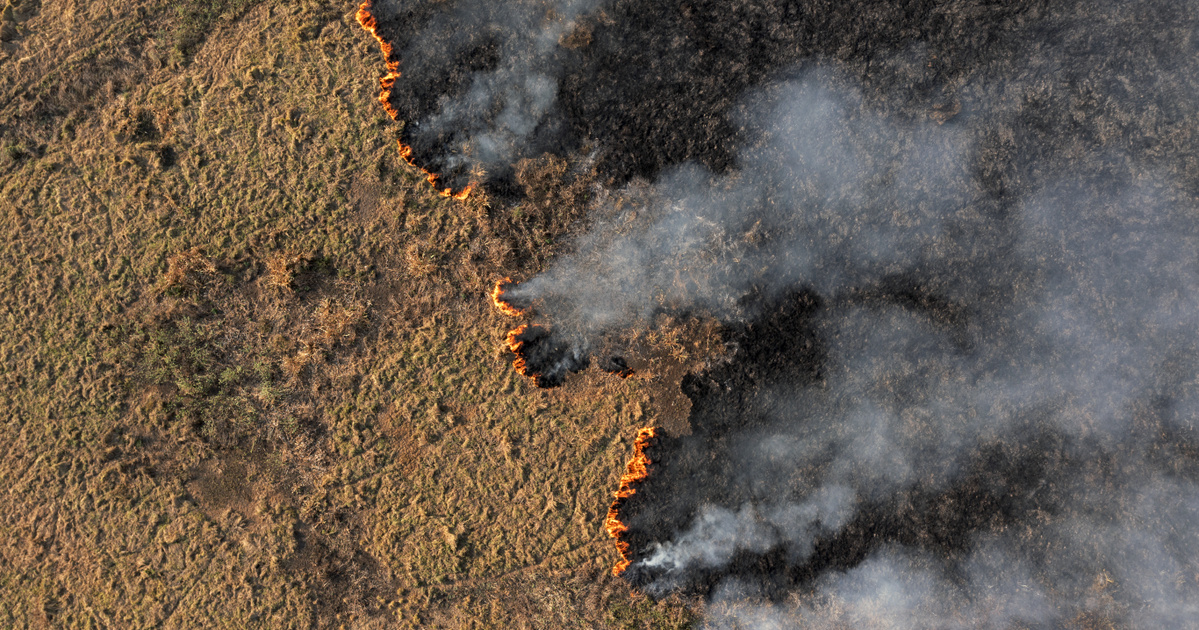More than 22,000 fires were recorded in the Brazilian part of the world’s largest wetland, the Pantanal, in 2020, an increase of more than 120 percent over the previous year.
The Amazon and the Pantanal are among the most valuable ecosystems on the planet.
The Amazon Basin, home to the world’s largest rainforest, plays a major role in mitigating climate change by absorbing carbon dioxide into the atmosphere. Nearly 60 percent of the Amazon rainforest belongs to Brazil. The Pantanal region extends from Brazil to Bolivia and Paraguay, and covers about 140-160 thousand square kilometers. Thirty percent of the Brazilian wetland part became prey to fires between January and November 2020, while the region was hit by the worst drought in half a century.
Brazilian researchers report a survey of animals killed in wildfires in a recent issue of Scientific Report. The study, described by the BBC news portal, draws attention to the need to prevent such natural disasters.
Wildfires also occur naturally in the Pantanal, but
Researchers said the devastation in 2020 was horrific.
Alex Lees, an ecologist at Manchester Metropolitan University who is also researching central Brazil and the Pantanal region, highlighted that last year’s fires were very different from the normal cycle of burning and regeneration, and that their intensity and apparent prevalence during the period under study could be attributed to severe drought. . “Pantanal will not tolerate burning to this extent year after year, and its biodiversity will not be able to recover from this” He said.
The study itself was based on the conclusions drawn from the count of dead animals at the site. Scientists reached the wetlands within 48 hours of the fire. They walked around the sections at regular intervals and checked all the dead animals. Three hundred species of animals that have been found have been identified. And then, according to calculations based on the survey, the extent of the destruction caused by the fire among the animals was determined.
The study’s lead author, Walfrido Moraes Tomas, an ecologist at the Embrapa Pantanal Research Institute, told the BBC they were not surprised by the numbers they had received because the fire had devastated a vast area. Surprisingly, some groups of animal species were affected more by fire than others. For example, many snakes have been killed, and since snakes usually feed on small mammals, their extinction could completely upset the balance of the ecosystem, he noted.
Mariana Napolitano Ferreira, a senior scientist with the World Wide Fund for Nature (WWF) in Brazil, confirmed that the field experiment was horrific, but field work and surveys are ongoing as they want to estimate how long it will take for the region’s ecosystem to restore.
According to researchers, one of the most amazing consequences of climate change due to human activity is the increased incidence of wildfires.
However, other scientists have expressed concerns about the accuracy of the estimate in the study. According to them, the margin of error is high if the total number of dead animals is deduced from the bodies of a few hundred aged animals that were immediately counted.
Previously on As we wrote in the index About the fact that wildfires break out in the Brazilian rainforest every year, but now the number has increased significantly. The arson of the rainforest is not an internal Brazilian affair and it is not a Brazilian agricultural issue, it affects the entire Earth’s climate and is now a global policy issue. the Grindex One of his writings reveals that the area of the rainforest in the Atlantic Ocean was once 1315 It covered an area of 460 square kilometers, and covers 15 percent of the area of the South American country, but today only fragmentary remains are left, while its area has shrunk to 20 percent of its original area. However, according to a Brazilian study, about 80 percent of the remaining parts also suffered severe damage, resulting in a loss of biodiversity and biomass. In quantitative terms, this means that there is 23 to 31 percent less tree species and 25 to 32 percent less biomass in the affected forests. The erosion of forest biomass alone is equivalent to cutting 70,000 square kilometers of forest, which is roughly the size of the Czech Republic by comparison.
(Cover Photo: An aerial view of a forest fire in the Pantanal region of Brazil on September 5, 2021. Photo: Carl de Sousa/AFP)












































